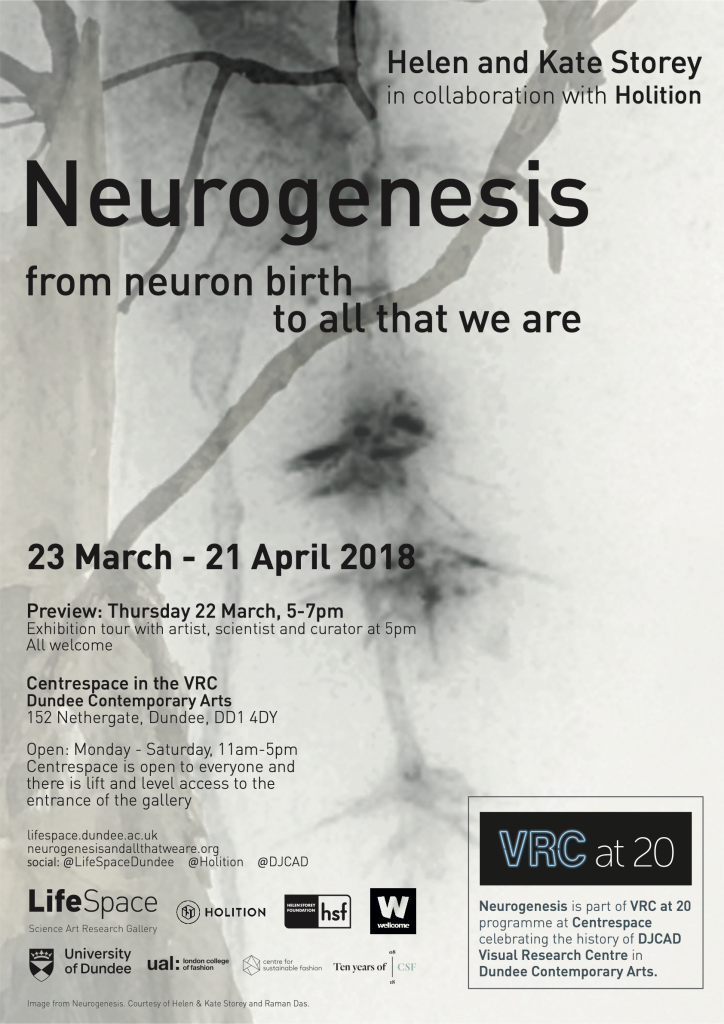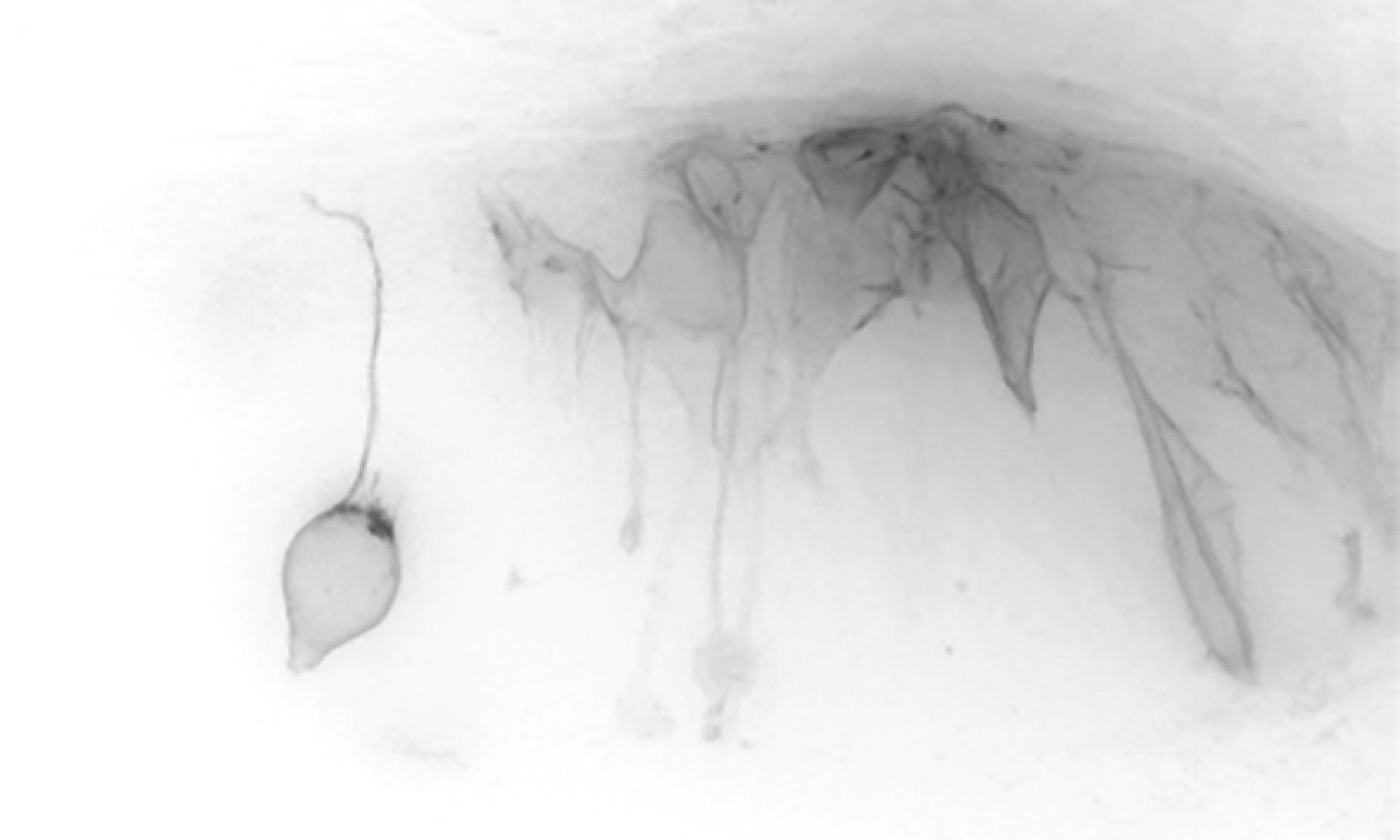We share our research with the public in a variety of ways, from school workplace experience and summer vacation studentships in the lab to School of Life Science and University open days for the public as well as contributions to science festivals.
One way in which Kate Storey and members of her group reach an even wider audience is through collaboration with artists.
Science Art projects
- Primitive Steak
This exhibition was created by Kate Storey and her sister, artist and fashion designer Helen Storey. It evokes and illustrates ten key events in human embryonic development, from fertilisation to the appearance of recognisable human form. A series of dresses and designs in textiles are supported by explanations of the scientific observations that inspired each piece. The primitive streak is a transient structure that appears in the early embryo, it indicates the head to tail axis and is a focus for cells that transition through it to form our inner organs and musculature.
The exhibition Primitive Streak has been used extensively by science and art teachers to develop projects which explore ways of presenting scientific information and ideas; examples include working with Creative Partnerships (an initiative of the Arts Council England) to establish a blueprint for” Creative Labs”, a concept replicated across the UK; and Digital Primitive Streak, a hands-on workshop for teenagers interested in using Art to convey science through digital media, held in Duncan of Jordanstone College of Art and Design, University of Dundee.
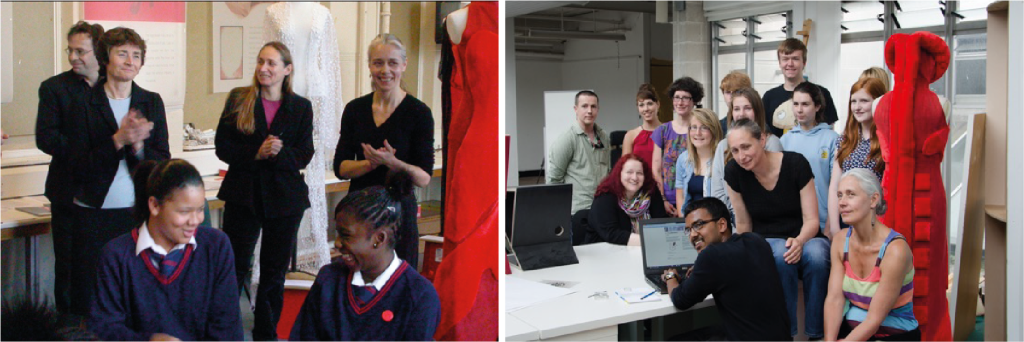
Since its opening in 1997 it has toured 7 countries and has been seen by over 3 million people. Primitive Streak has received wide press coverage (newspaper, Radio and Television) including major features in The Sunday Times, Daily Mail, YOU magazine, Radio 4 programmes: Woman’s Hour, Science Now, and Forbidden Planet, which have provided a platform for explaining our embryonic origins.
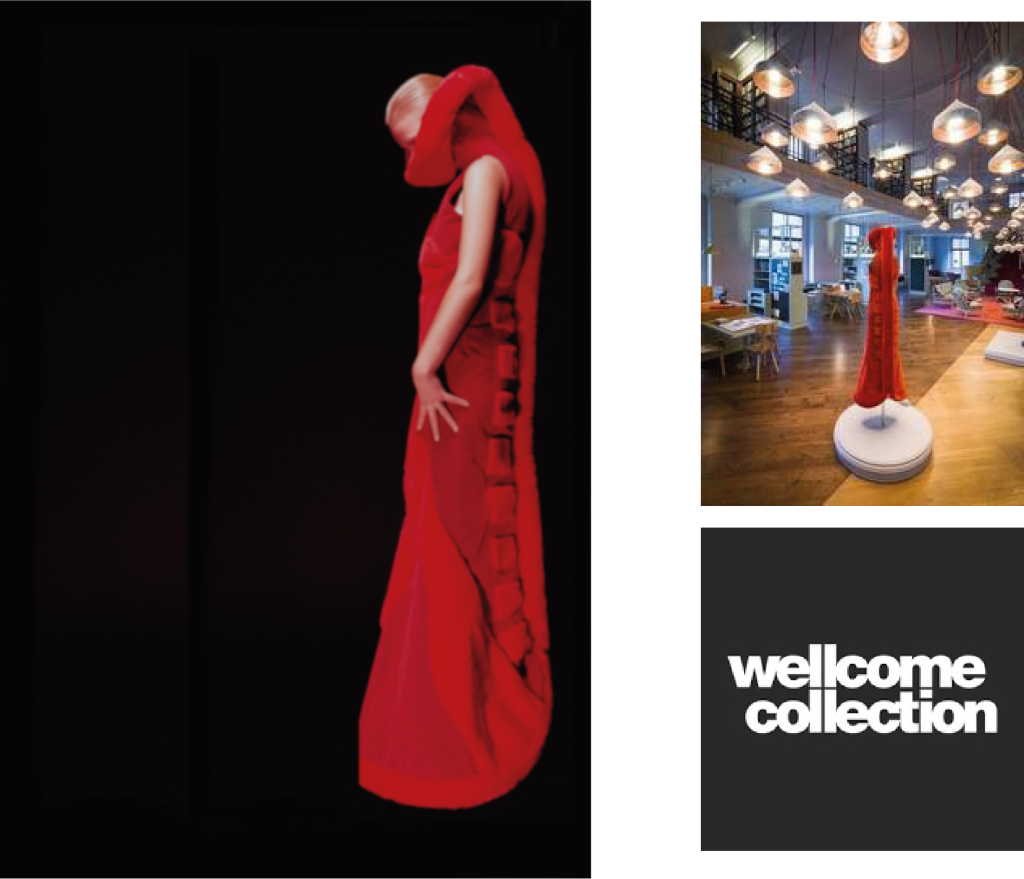
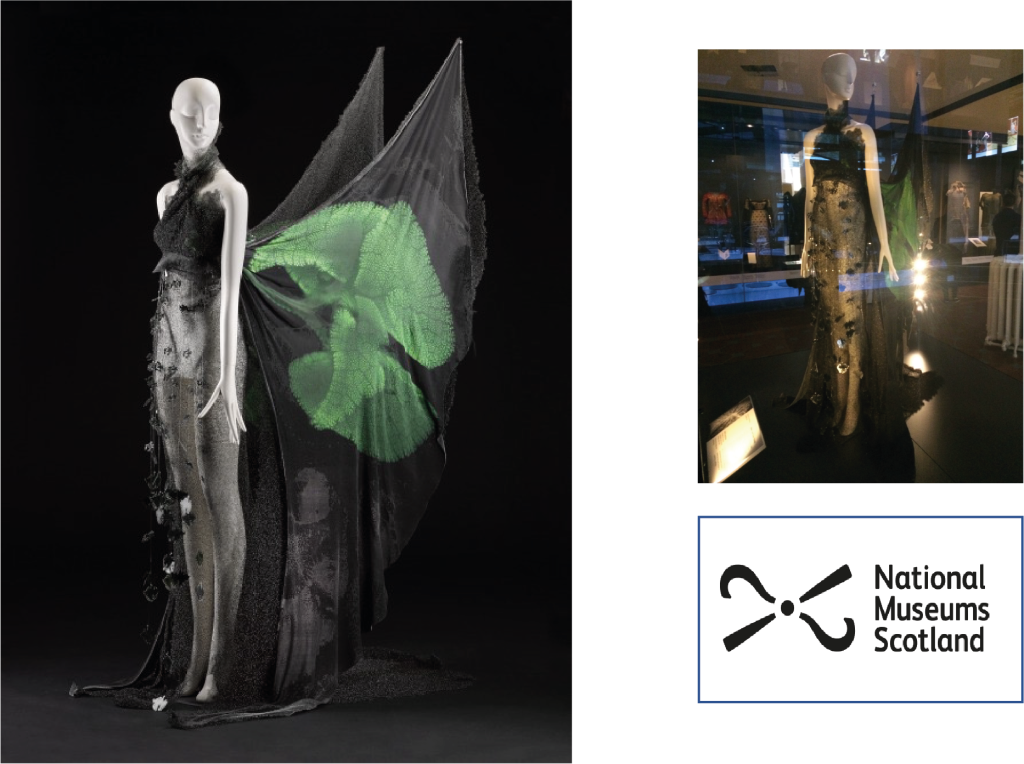
The creation of Primitive Streak was funded by the Wellcome Trust Sci-Art initiative and by the Royal Society COPUS fund.
Find out about how we worked together and more about the exhibition and the key events in human embryonic development that inspired the work here:
- Designs for Life
A collaboration with printmaker Paul Harrison
The Designs for Life project was developed by Paul Harrison at the University of Dundee’s Visual Research Centre (VRC). This project explored the process of visualisation of laboratory data relating to cell and gene research. This involved a series of collaborations between Dundee-based scientists and Paul Harrison to develop new screen print outcomes based on images, data and information from their laboratory research.
Kate Storey and post-doc researcher Arwen Wilcock participated in the project. They chose to work with images of the developing embryo and with a series of stills taken from real-time imaging of cells becoming neurons. These convey the unique sequence of cell behaviours which they found to underlie neuron birth. The resulting large-scale prints formed part of an exhibition and symposium looking at the potential of visual design for the explanation of cell behaviour during development and regulation of gene expression, held at Dundee Contemporary Arts centre.
- Neurogenesis – from neuron birth to all that we are
Helen and Kate Storey, in collaboration with creative innovation studio Holiton
This work developed from the central theme of Kate Storey’s research, neurogenesis or the making of neurons. Using movies of cells in the developing nervous system Helen and Kate experimented with ways in which to convey the process of neurogenesis to a wide audience.
The work focused on a recent discovery in Kate’s laboratory identifying a mechanism that regulates the detachment of new-born neurons from the inner, ventricular surface of the neural tube. This detachment is required for these new nerve cells to adopt appropriate morphologies and positions to make a functional nervous system.
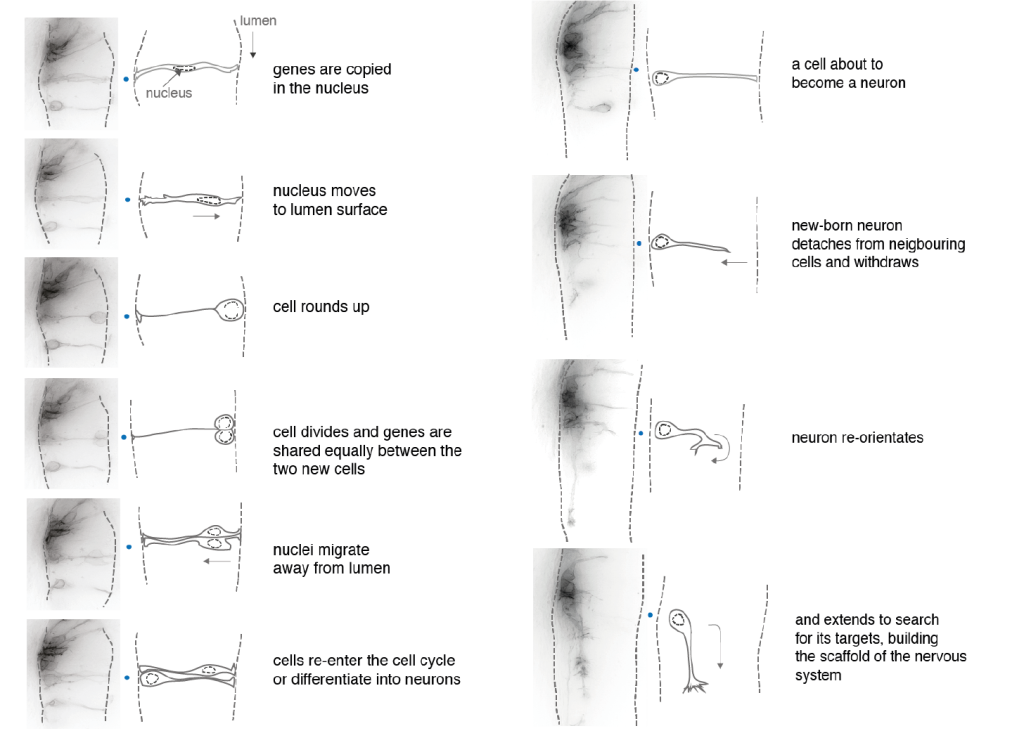
Working in collaboration with Holition, the installation combined movies of neurons being born in an interactive physical space. This allowed the exhibition visitor to stop and start the process of neurogenesis at key moments, such as cell division, new nerve cell detachment, and extension of connections (axons) as the nervous system is wired up.
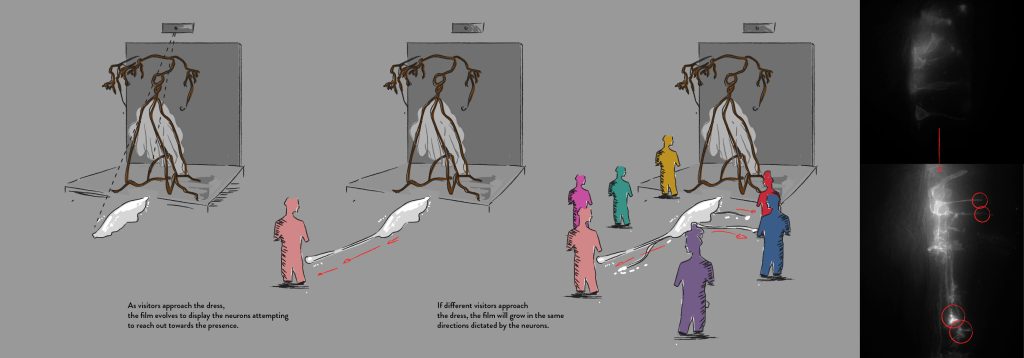
The imagery of the piece further connects this process to how the nervous system changes with experience and age. This is reflected by choosing materials that nature has acted upon, fabrications that are losing their original properties, eroded by the environment over time. These were juxtaposed with images of cells making the nervous system, opening thoughts about neurogenesis and neuron loss, altering memory and perception. The work illuminates the cellular basis of our nervous system and invites juxtaposition of our understanding of this with our lived experience of the functions it underlies.
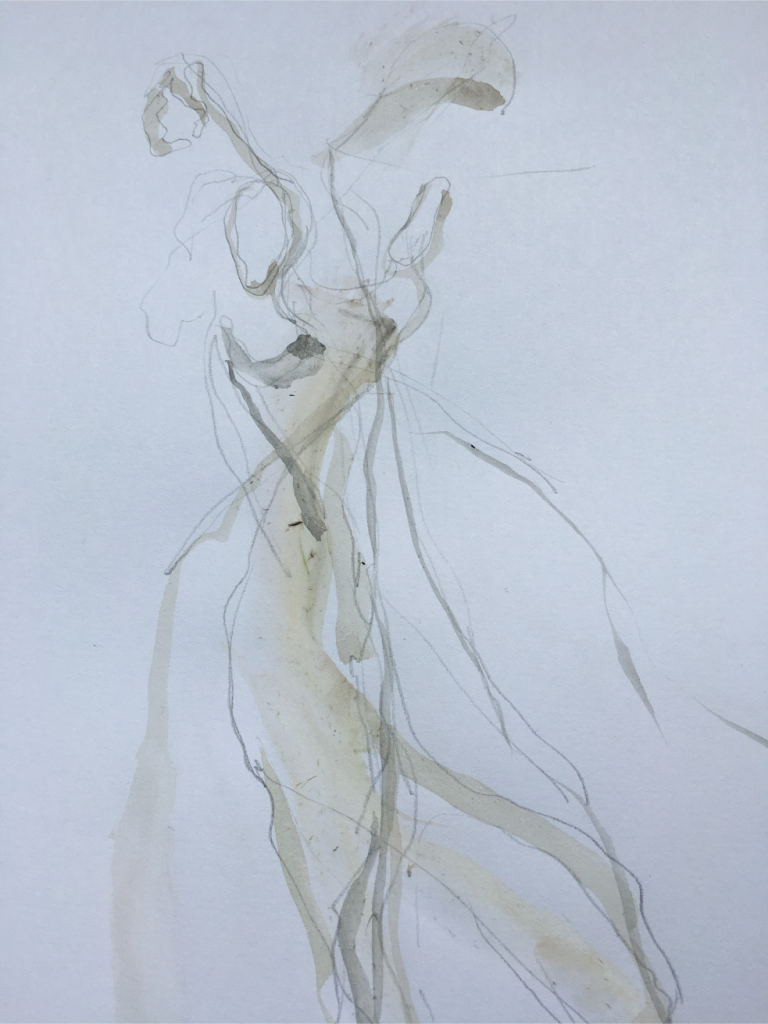
The work was first exhibited in at Visual Research Centre at the Dundee Contemporary Arts in 2018 and can be found here:
